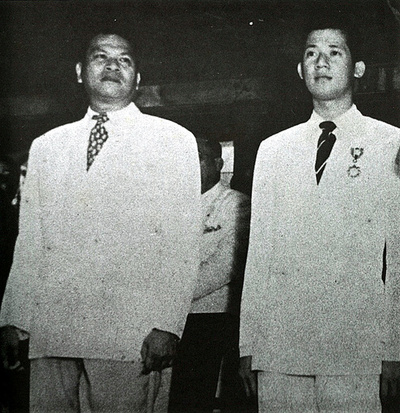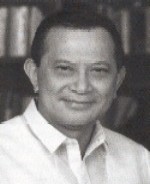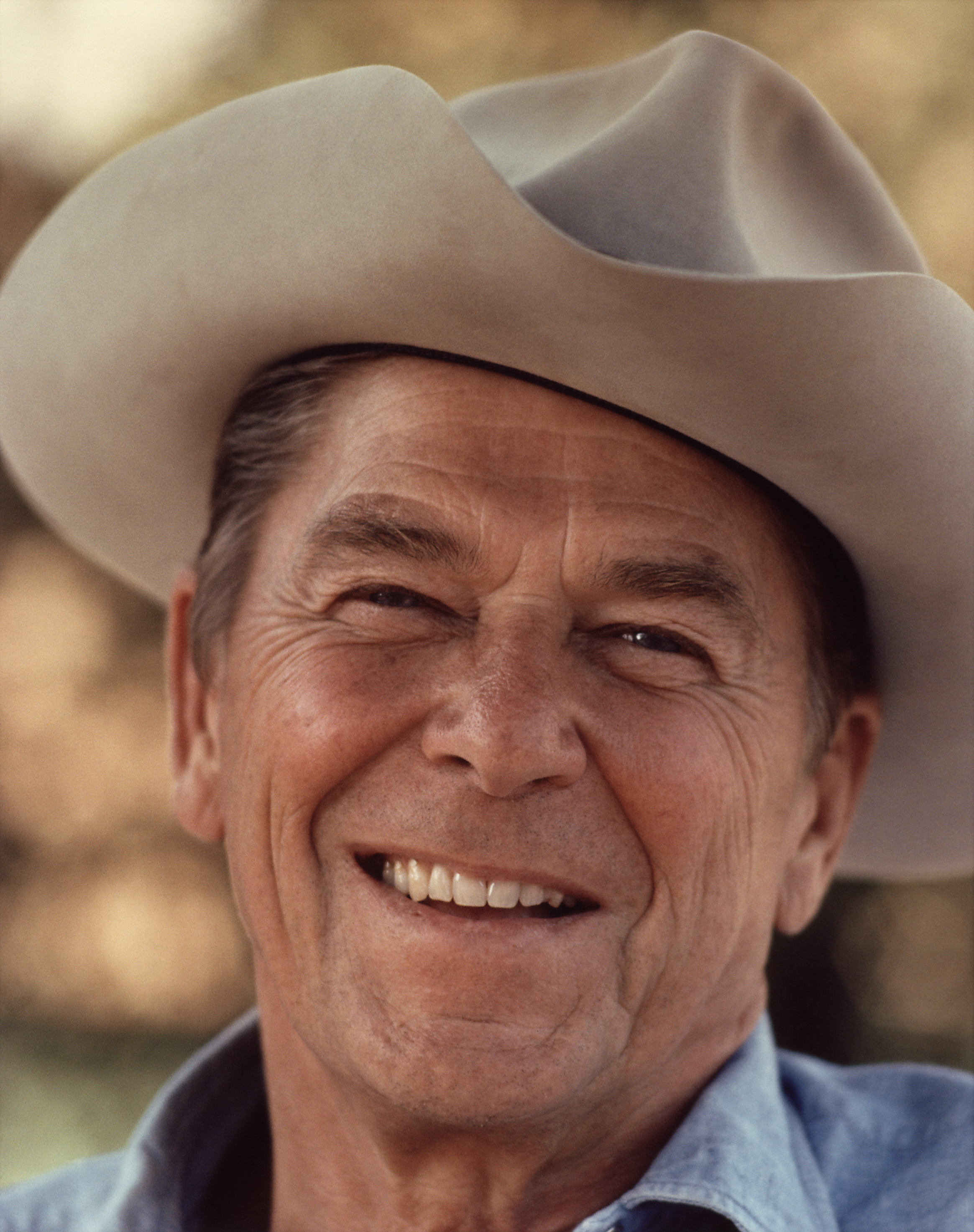|
1984 Philippine Parliamentary Election
A parliamentary election was held on May 14, 1984 in the Philippines. Like past elections, charges of bribery, protests and complaints on irregularities marred the elections. Former ''Manila Times'' publisher Chino Roces and former senator and opposition leader Jose W. Diokno supported the campaign boycotting the election. The National Movement for Free Elections (NAMFREL) helped mitigate electoral fraud during the election. The ruling Kilusang Bagong Lipunan (KBL) retained a majority in parliament, but the opposition United Nationalist Democratic Organization (UNIDO) made massive gains, winning 60 seats and reducing the KBL's majority to 114 compared to the 150 they had in 1978. This was the first Philippine election to happen after the end of the controversial martial law period from 1972 to 1981. The opposition's success was due in most part because of the public fallout after the assassination of Benigno Aquino Jr. on August 21, 1983. His death exposed an increasingly inc ... [...More Info...] [...Related Items...] OR: [Wikipedia] [Google] [Baidu] |
Regular Batasang Pambansa
The Regular Batasang Pambansa (English: Regular National Assembly), or the First Batasang Pambansa, was the meeting of the Batasang Pambansa from the beginning of its session on July 23, 1984 until it was abolished by President Corazon Aquino on March 25, 1986. Events Marcos impeachment attempt On August 13, 1985, 56 assemblymen signed a resolution calling for the impeachment of President Marcos for graft and corruption, culpable violation of the Constitution, gross violation of his oath of office and other high crimes. They cited the ''San Jose Mercury News'' exposé of the Marcoses' multimillion-dollar investment and property holdings in the United States. The properties allegedly amassed by the First Family were the Crown Building, Lindenmere Estate, and a number of residential apartments (in New Jersey and New York), a shopping center in New York, mansions (in London, Rome and Honolulu), the Helen Knudsen Estate in Hawaii and three condominiums in San Francisco, California. ... [...More Info...] [...Related Items...] OR: [Wikipedia] [Google] [Baidu] |
Assassination Of Benigno Aquino Jr
Benigno "Ninoy" Aquino Jr., a former Philippine senator, was assassinated on Sunday, August 21, 1983, on the tarmac of Manila International Airport (now named Ninoy Aquino International Airport in his honor). A longtime political opponent of President Ferdinand Marcos, Aquino had just landed in his home country after three years of self-imposed exile in the United States when he was shot in the head while being escorted from an aircraft to a vehicle that was waiting to transport him to prison. Also killed was Rolando Galman, who was falsely accused of Aquino's murder. Aquino was elected to the Philippine Senate in 1967 and was critical of Marcos. He was imprisoned on trumped up charges shortly after Marcos's 1972 declaration of martial law. In 1980, he had a heart attack in prison and was allowed to leave the country two months later by Marcos' wife, Imelda. He spent the next three years in exile near Boston before deciding to return to the Philippines. Aquino's assassination ... [...More Info...] [...Related Items...] OR: [Wikipedia] [Google] [Baidu] |
Julio Teehankee
Julio Cabral Teehankee is a Filipino political scientist. He is Full Professor of Political Science and International Studies at De La Salle University (DLSU) where he served as Chair of the Political Science Department (1994–2007); Chair of the International Studies Department (2008–2013); and Dean of the College of Liberal Arts (2013–2017). He continuously aims to bridge theory and practice in academic and other professional endeavors. Aside from teaching and research, he has served as political and policy consultant to government officials, electoral candidates, political parties, national and international organizations. Teehankee specializes in the comparative analysis and development of East and Southeast Asia, with particular focus on elections, party politics, democratization and governance. He has published papers on elections, party politics, and political dynasties in the Philippines, Japan and Southeast Asia. He has been cited as one of only four political sc ... [...More Info...] [...Related Items...] OR: [Wikipedia] [Google] [Baidu] |
Mindanao Alliance
Mindanao ( ) ( Jawi: مينداناو) is the second-largest island in the Philippines, after Luzon, and seventh-most populous island in the world. Located in the southern region of the archipelago, the island is part of an island group of the same name that also includes its adjacent islands, notably the Sulu Archipelago. According to the 2020 census, Mindanao has a population of 26,252,442 people, while the entire island group has an estimated population of 27,021,036 according to the 2021 census. Mindanao is divided into six administrative regions: the Zamboanga Peninsula, Northern Mindanao, the Caraga region, the Davao region, Soccsksargen, and the autonomous region of Bangsamoro. According to the 2020 census, Davao City is the most populous city on the island, with 1,776,949 people, followed by Zamboanga City (pop. 977,234), Cagayan de Oro (pop. 728,402), General Santos (pop. 697,315), Butuan (pop. 372,910), Iligan (pop. 363,115) and Cotabato City (pop. 325,079). About ... [...More Info...] [...Related Items...] OR: [Wikipedia] [Google] [Baidu] |
Nacionalista Party
The Nacionalista Party (Filipino and Spanish: ''Partido Nacionalista''; ) is the oldest political party in both the Philippines and in Southeast Asia in general. It is responsible for leading the country throughout the majority of the 20th century since its founding in 1907; it was the ruling party from 1935 to 1946 (under Presidents Manuel L. Quezon and Sergio Osmeña), 1953–1961 (under Presidents Ramon Magsaysay and Carlos P. Garcia) and 1965–1972 (under President Ferdinand Marcos). Ideology The Nacionalista Party was initially created as a Filipino nationalist party that supported Philippine independence until 1946 when the United States granted independence to the country.Liow, J.; Leifer, M. (1995)''Dictionary of the Modern Politics of Southeast Asia'' New York: Routledge. Retrieved October 16, 2017. Since then, many scholarly articles that dealt with the history of political parties during the Third Republic agreed that the party has been increasingly populist,Celo ... [...More Info...] [...Related Items...] OR: [Wikipedia] [Google] [Baidu] |
1984 Philippine Parliamentary Election Results
Events January * January 1 – The Bornean Sultanate of Brunei gains full independence from the United Kingdom, having become a British protectorate in 1888. * January 7 – Brunei becomes the sixth member of the Association of Southeast Asian Nations (ASEAN). * January 10 ** The United States and the Vatican City, Vatican (Holy See) restore full diplomatic relations. ** The Victoria, Seychelles, Victoria Agreement is signed, institutionalising the Indian Ocean Commission. *January 24 – Steve Jobs launches the Macintosh 128K, Macintosh personal computer in the United States. February * February 3 ** Dr. John Buster and the research team at Harbor–UCLA Medical Center announce history's first embryo transfer from one woman to another, resulting in a live birth. ** STS-41-B: Space Shuttle Challenger, Space Shuttle ''Challenger'' is launched on the 10th Space Shuttle mission. * February 7 – Astronauts Bruce McCandless II and Robert L. Stewart make the first untethered spac ... [...More Info...] [...Related Items...] OR: [Wikipedia] [Google] [Baidu] |
Partido Demokratiko Pilipino-Lakas Ng Bayan
Partido, partidista and partidario may refer to: * Spanish for a political party, people who share political ideology or who are brought together by common issues Territorial subdivision * Partidos of Buenos Aires, the second-level administrative subdivision in the Province of Buenos Aires, Argentina * Partidos of Chile, a third-level subdivision in Colonial Chile below intendencias, also known as ''corregimientos'' * Judicial district, shortened from ''partido judicial'' in some Spanish-speaking countries * Partido (region) Partido () was a Spanish colonial term that referred to a governed local administrative region, roughly equivalent to today's municipality in terms of rural land areas included, and used in the Spanish colonies in the Americas during the time ..., a non-autonomous administrative region during the times of the Spanish Empire in the Americas Places * Partido, Dominican Republic, a town in Dajabón Province of the Dominican Republic {{Disambiguation ... [...More Info...] [...Related Items...] OR: [Wikipedia] [Google] [Baidu] |
Benigno Aquino Jr
Benigno "Ninoy" Simeon Aquino Jr., (; November 27, 1932 – August 21, 1983) was a Filipino politician who served as a senator of the Philippines (1967–1972) and governor of the province of Tarlac. Aquino was the husband of Corazon Aquino, who became the 11th president of the Philippines after his assassination, and father of Benigno Aquino III, who became the 15th president of the Philippines. Aquino, together with Gerardo Roxas and Jovito Salonga, helped form the leadership of the opposition towards then President Ferdinand Marcos. He was the aggressive leader who together with the intellectual leader Sen. Jose W. Diokno led the overall opposition. Early in his Senate career, Aquino vigorously attempted to investigate the Jabidah massacre in March 1968. Shortly after the imposition of martial law in 1972, Aquino was arrested along with other members of the opposition. He was incarcerated for seven years. He has been described as Marcos' "most famous political prisoner". ... [...More Info...] [...Related Items...] OR: [Wikipedia] [Google] [Baidu] |
Ninoy Assassination
Benigno "Ninoy" Simeon Aquino Jr., (; November 27, 1932 – August 21, 1983) was a Filipino politician who served as a senator of the Philippines (1967–1972) and governor of the province of Tarlac. Aquino was the husband of Corazon Aquino, who became the 11th president of the Philippines after his assassination, and father of Benigno Aquino III, who became the 15th president of the Philippines. Aquino, together with Gerardo Roxas and Jovito Salonga, helped form the leadership of the opposition towards then President Ferdinand Marcos. He was the aggressive leader who together with the intellectual leader Sen. Jose W. Diokno led the overall opposition. Early in his Senate career, Aquino vigorously attempted to investigate the Jabidah massacre in March 1968. Shortly after the imposition of martial law in 1972, Aquino was arrested along with other members of the opposition. He was incarcerated for seven years. He has been described as Marcos' "most famous political prisoner". ... [...More Info...] [...Related Items...] OR: [Wikipedia] [Google] [Baidu] |
People Power Revolution
The People Power Revolution, also known as the EDSA Revolution or the February Revolution, was a series of popular Demonstration (people), demonstrations in the Philippines, mostly in Metro Manila, from February 22 to 25, 1986. There was a sustained campaign of civil resistance against regime violence and electoral fraud. The nonviolent revolution led to the departure of Ferdinand Marcos, the end of his 20-year dictatorship and the restoration of democracy in the Philippines. It is also referred to as the Yellow Revolution due to the presence of yellow ribbons during demonstrations (in reference to the Tony Orlando and Dawn song "Tie a Yellow Ribbon Round the Ole Oak Tree") as a symbol of protest following the Assassination of Benigno Aquino Jr., assassination of Filipino senator Benigno "Ninoy" Aquino, Jr. in August 1983 upon his return to the Philippines from exile. It was widely seen as a victory of the people against two decades of presidential rule by President Marcos, ... [...More Info...] [...Related Items...] OR: [Wikipedia] [Google] [Baidu] |
1986 Philippine Presidential Election
The 1986 Philippine presidential and vice presidential elections were held on February 7, 1986. Popularly known as the 1986 snap election, it is among the landmark events that led up to the People Power Revolution, the downfall of the presidency of Ferdinand Marcos, and the accession of Corazon Aquino, Corazon C. Aquino as president. Background Influence of the American media After being dared by an American journalist, President Ferdinand Marcos, Ferdinand E. Marcos declared a snap election during an interview on the American Broadcasting Company political affairs programme, ''This Week (ABC TV series), This Week with David Brinkley'' in November 1985. On December 3, the Batasang Pambansa (National Assembly) passed a law setting the date of the election on February 7, 1986. On February 4, 1986, Marcos declared February 6 and 7 as nationwide non-working special public holidays to "give all registered voters fullest opportunity to exercise their right of suffrage." The Assa ... [...More Info...] [...Related Items...] OR: [Wikipedia] [Google] [Baidu] |
Reagan Administration
Ronald Reagan's tenure as the 40th president of the United States began with his first inauguration on January 20, 1981, and ended on January 20, 1989. Reagan, a Republican from California, took office following a landslide victory over Democratic incumbent President Jimmy Carter in the 1980 presidential election. Four years later, in the 1984 election, he defeated Democrat former vice president Walter Mondale to win re-election in a larger landslide. Reagan was succeeded by his vice president, George H. W. Bush. Reagan's 1980 election resulted from a dramatic conservative shift to the right in American politics, including a loss of confidence in liberal, New Deal, and Great Society programs and priorities that had dominated the national agenda since the 1930s. Domestically, the Reagan administration enacted a major tax cut, sought to cut non-military spending, and eliminated federal regulations. The administration's economic policies, known as "Reaganomics", were insp ... [...More Info...] [...Related Items...] OR: [Wikipedia] [Google] [Baidu] |
.jpg)






